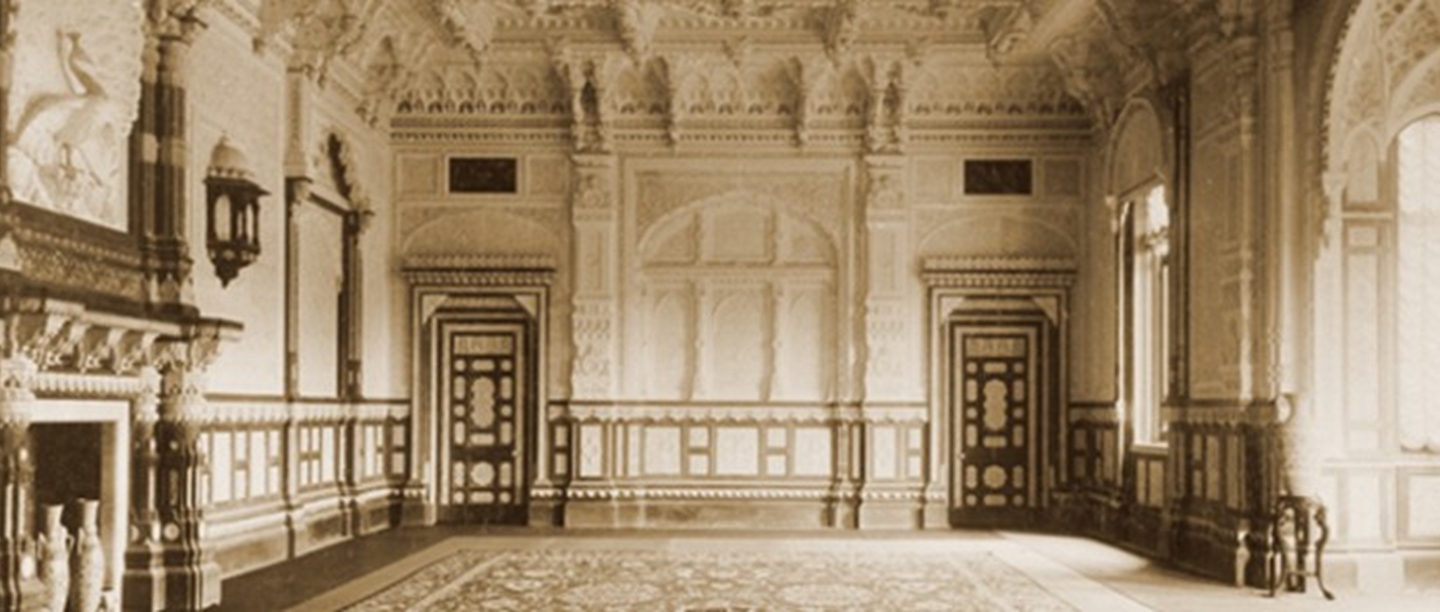
The item below was given to Queen Victoria on the occasion of the sixtieth anniversary of her accession to the throne, her Diamond Jubilee, in 1897 – but what is it, and what was it used for? Michael Hunter, Curator of Osborne explains…
Queen Victoria became Empress of India in 1877 and, although she never visited the country, known as the jewel in her crown, India occupied a special place in her imagination. By the time of her Diamond Jubilee in 1897 the British Empire was vast and the formal celebrations in London were designed to reflect the power and extent of British imperial power. Many of the Indian maharajas came to London to take part in the various processions through the city and to attend receptions at Buckingham Palace.
Queen Victoria received many formal addresses of congratulation from the various rulers and communities in India. These were often very decorative, consisting of elaborate, handwritten texts on vellum or parchment. These addresses were contained in caskets which were made in a technique that was common in that particular region of India. Some caskets were made of sandalwood, elaborately carved or inlaid with ivory and silver.
Ceremonial Address Casket
This particular casket is modelled on a cannon known as “Malik-e-Maidan”, the Great Gun of Bijapur. Also known as “The Monarch of the Plains”, this 55-ton cannon was cast in 1549 and brought to Bijapur (now Vijayapura city, 550 km inland from Mumbai, and 384 km west of the city of Hyderabad) as a trophy of war in the 17th century. It was placed on a special platform on the Lion Gate of the city’s fort. It is said that after igniting the cannon, the gunner would remain underwater in a tank on the platform to avoid the deafening explosion.
Vijayapura, established in the 10th and 11th centuries, is well known for its historical monuments built during the rule of the Adil Shahi dynasty. In 1818 the city passed into the hands of the East India Company, and in 1848 was annexed to Britain’s Bombay Presidency.
The muzzle of the address case is in the form of a stylized bull’s head, with elephants about to be crushed by the massive teeth. The formal address would have been inserted though a disc at the rear.
This is one of a number of objects in our collection at Osborne relating to Queen Victoria's role as Empress of India. Work is currently underway to re-present the grand Durbar room which was part of the new wing at Osborne constructed by the Queen in 1890-91 to create a tangible reminder of the land she would never visit. The objects, predmoninantly a collection of fine, decorative gifts from the sub-continent, commemorating the golden and diamond jubilees of 1887 and 1897, will be on display in the Durbar room which is due to re-open in the Spring 2015.